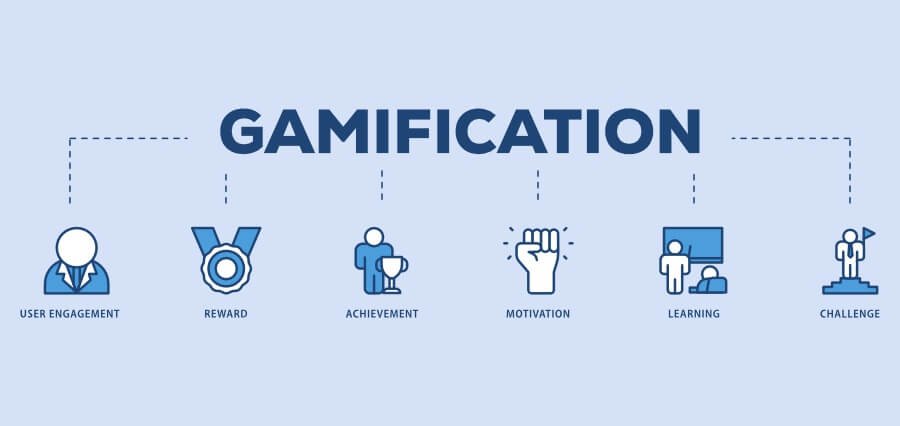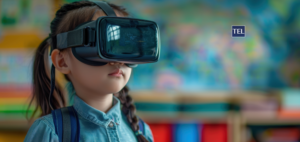#Fun Learn
Playful Learning Engagement
Engaging students and fostering knowledge retention are ongoing challenges in the dynamic world of education. Traditional methods often fall short of capturing the attention and interest of modern learners. Gamification in education is a dynamic and impactful approach that integrates game design elements into educational settings. By transforming learning into a playful and interactive experience, gamification has the potential to revolutionize education, making it more engaging and effective.
The concept of gamification in education involves the application of game mechanics, such as points, badges, leaderboards and quests, to educational activities. This approach leverages the natural human inclination towards play and competition, fostering a more engaging and immersive learning environment.
The correlation between gamification and boosting engagement and retention is profound. When students are actively involved in their learning process through game-like experiences, they are more likely to stay motivated, participate enthusiastically and retain the information better.
The subtitle “Playful Learning Engagement” emphasizes the core idea that learning can be fun and engaging when infused with playful elements. Gamification transforms the traditional educational experience into one that is interactive and enjoyable, leading to higher levels of student engagement and better retention of knowledge. Through gamified learning, students are not only passive recipients of information but active participants in a stimulating and rewarding educational journey.
The Essence of Gamification in Education
Gamification in education refers to the use of game design principles and mechanics to enhance the learning experience. This approach is not about turning the classroom into a game but rather about integrating specific elements that make learning more engaging and motivating. These elements can include point systems, badges for achievements, progress bars, leaderboards, and interactive challenges.
Engaging the Modern Learner
Today’s students are digital natives, accustomed to interactive and multimedia-rich environments. Traditional lecture-based learning often fails to capture their attention and interest. Gamification leverages their familiarity with digital games and interactive content, making learning more relatable and enjoyable. By incorporating elements of play into the educational process, gamification creates a more engaging and stimulating learning environment.
Boosting Engagement through Gamification
Motivation and Participation
One of the primary benefits of gamification in education is its ability to boost motivation and participation. Game mechanics such as points, badges and leaderboards provide immediate feedback and recognition, encouraging students to stay engaged and strive for continuous improvement. The sense of accomplishment and progress drives students to participate actively and persistently in their learning activities.
Personalized Learning Paths
Gamification allows for the creation of personalized learning paths that cater to individual student needs and preferences. Adaptive learning technologies can use gamification elements to tailor the learning experience to each student’s pace and level of understanding. This personalization enhances engagement by providing challenges that are appropriately matched to the student’s abilities, preventing frustration and boredom.
Enhancing Retention through Playful Learning
Interactive and Experiential Learning
Gamification transforms learning from a passive to an active experience. Interactive and experiential learning activities such as simulations, role-playing and quests, enable students to apply theoretical knowledge in practical scenarios. This hands-on approach enhances retention by allowing students to learn through experience and experimentation.
Cognitive Benefits of Play
Research has shown that play has significant cognitive benefits, including improved memory, problem-solving skills and creativity. Gamification taps into these benefits by creating a playful learning environment where students can explore, experiment and discover. This playful approach to learning fosters deeper cognitive processing, leading to better retention of information.
Key Elements of Effective Gamification
Clear Objectives and Goals
For gamification to be effective, it must have clear objectives and goals that align with the educational outcomes. Students need to understand what they are working towards and how their progress will be measured. Clear objectives provide direction and purpose, ensuring that gamified activities are meaningful and relevant to the learning process.
Balanced Challenge and Reward
An effective gamification strategy strikes a balance between challenge and reward. The tasks should be challenging enough to keep students engaged but not so difficult that they become discouraged. Rewards such as points, badges and other incentives, should be meaningful and attainable providing a sense of accomplishment and motivation to continue.
Social Interaction and Collaboration
Gamification can enhance social interaction and collaboration among students. Features such as leaderboards, team challenges and collaborative quests encourage students to work together, share knowledge and support each other. This collaborative aspect not only boosts engagement but also fosters a sense of community and belonging in the learning environment.
Real-world Applications of Gamification
- Case Study: ClassCraft: ClassCraft is a popular gamification platform used in educational settings to enhance student engagement and motivation. It transforms the classroom into a role-playing game where students can earn points, unlock new abilities and collaborate on quests. By integrating game mechanics into the curriculum, ClassCraft has successfully boosted student participation, motivation and academic performance.
- Corporate Training and Professional Development: Gamification is not limited to K-12 education; it is also widely used in corporate training and professional development. Companies use gamified training programs to enhance employee engagement, skill development and retention. By making training more interactive and enjoyable, gamification helps employees acquire new skills more effectively and retain information longer.
Enhanced Learning, Interesting Modes
Gamification in education is a powerful tool that can significantly boost engagement and retention through playful learning. By integrating game design elements into the educational experience, gamification transforms learning into an interactive, motivating and enjoyable process. The use of points, badges, leaderboards, and interactive challenges captures students’ attention, fosters active participation and enhances the retention of knowledge.
As technology continues to advance, the integration of gamification in education will likely become more sophisticated and widespread. Future developments may include more personalized and adaptive gamified learning experiences, further enhancing student engagement and retention through innovative and immersive educational technologies.





